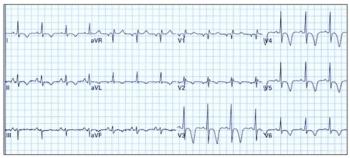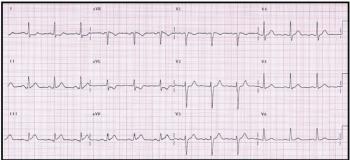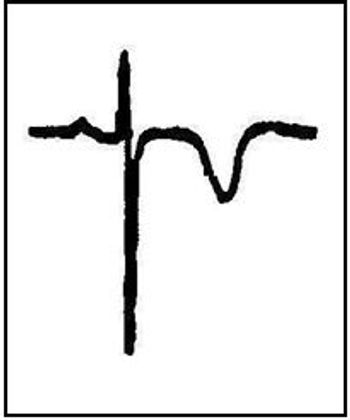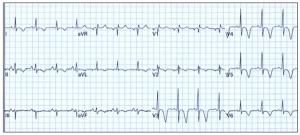
Chest pain at rest brought this 42-year-old man to the ED. He had experienced the pain in the past but only on exertion. He appears well on arrival. What does the ECG show?

Chest pain at rest brought this 42-year-old man to the ED. He had experienced the pain in the past but only on exertion. He appears well on arrival. What does the ECG show?


A middle-aged woman presents to the ED complaining of chest pain, dyspnea, and emesis. Here, review results of a 12-lead ECG. How would you confirm a diagnosis of STEMI?

The presence of reciprocal change supports the diagnosis of STEMI and also is a sign of a high-risk patient.

This 32-year-old woman's family brought her to the ED after 2 days of progressive confusion, fatigue, and weakness. Her multiple medical problems included juvenile-onset diabetes mellitus. Here, more details and a management challenge.

Hyperkalemia is the most serious of the electrolyte disorders and can lead to death if not managed appropriately.

Can you discern the anomaly in this patient's ECG? What clue(s) does it provide to the underlying pathology?

The ECG is frequently the initial diagnostic tool used by clinicians when evaluating patients with suspected acute coronary syndrome.

Here, a concise review of the many clinical syndromes that can cause T-wave inversion with accompanying tracings.

Published: February 21st 2016 | Updated:

Published: February 14th 2014 | Updated:

Published: February 21st 2016 | Updated:

Published: April 25th 2014 | Updated:

Published: April 24th 2014 | Updated:

Published: February 13th 2014 | Updated: